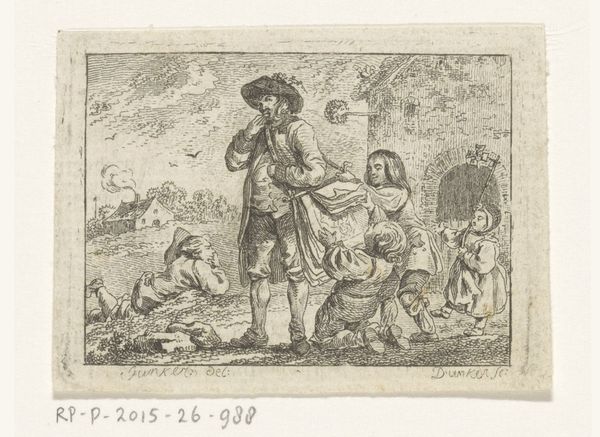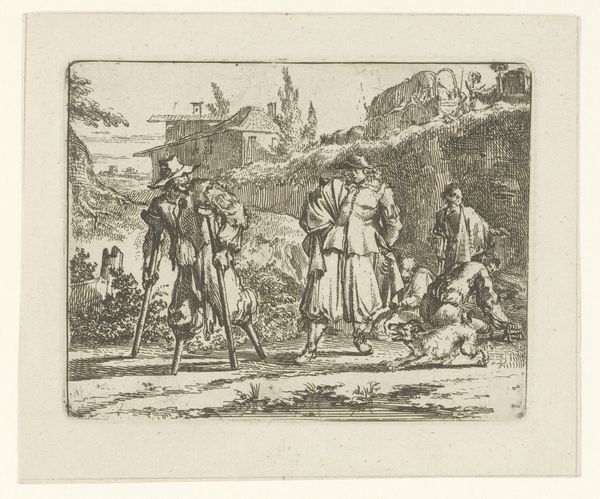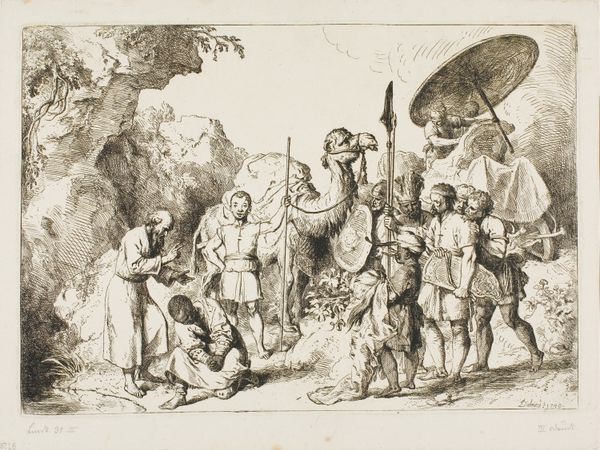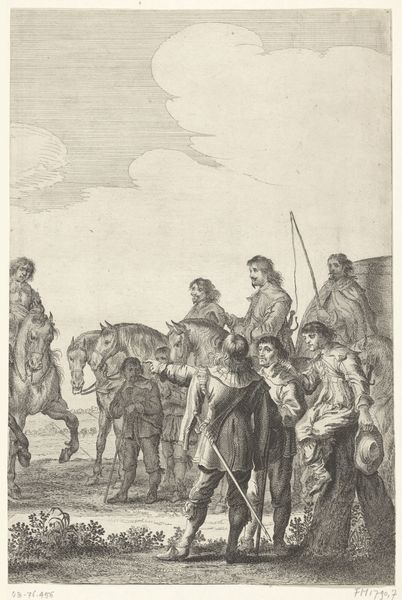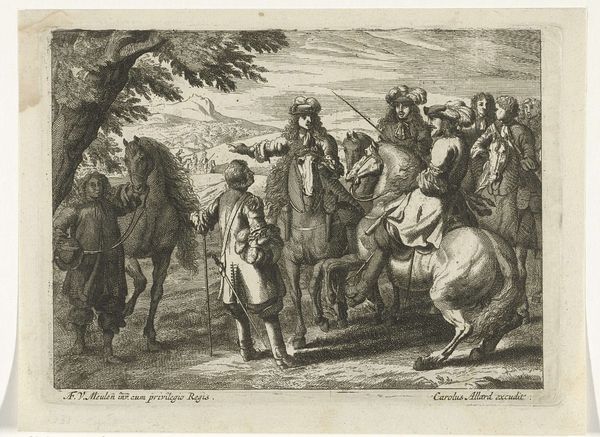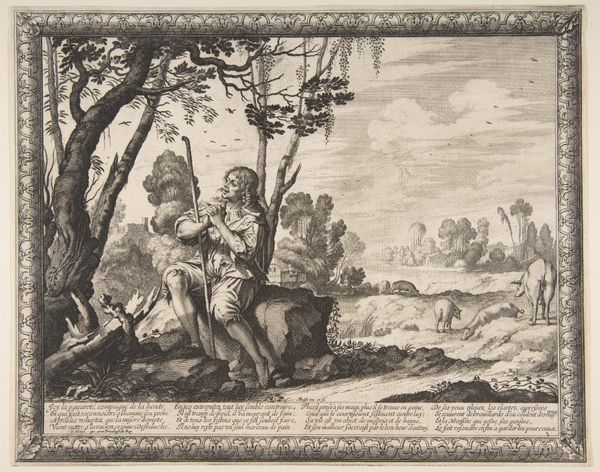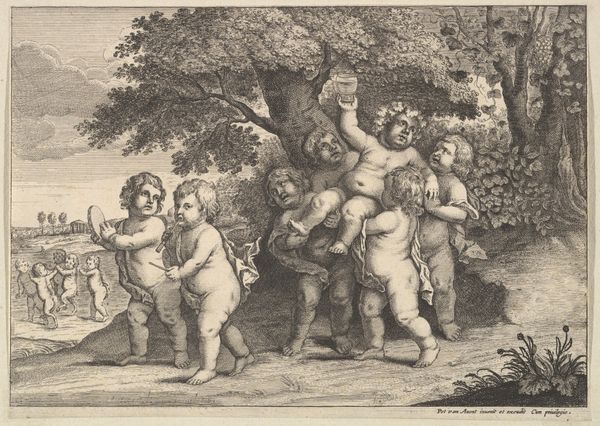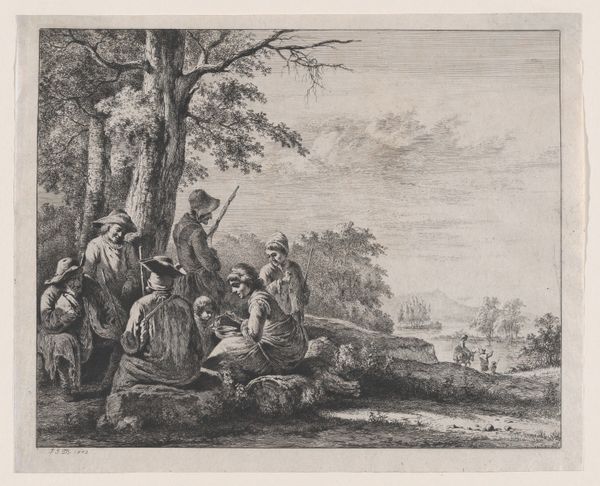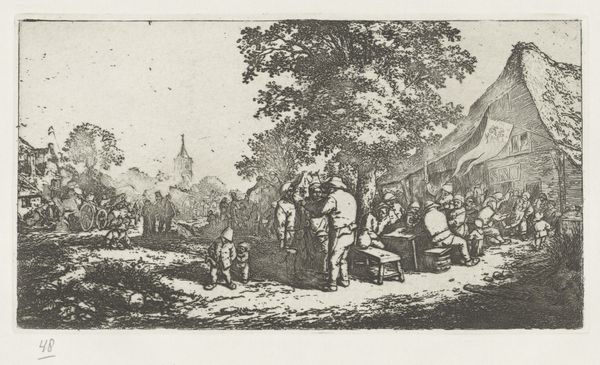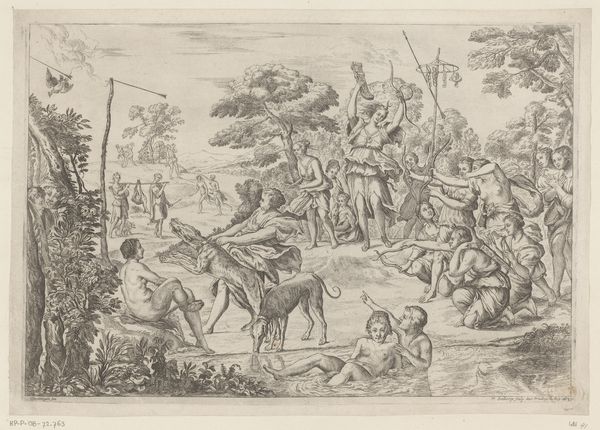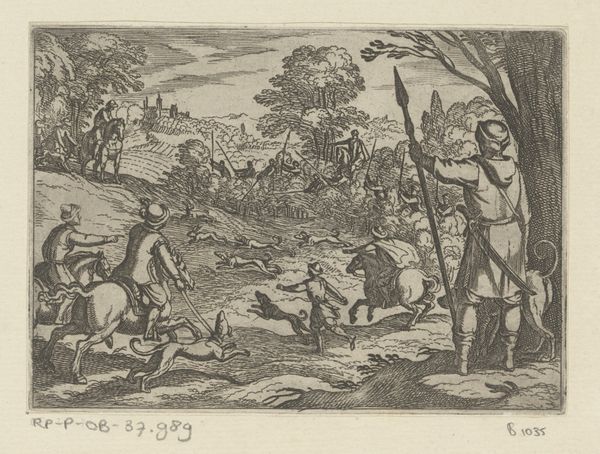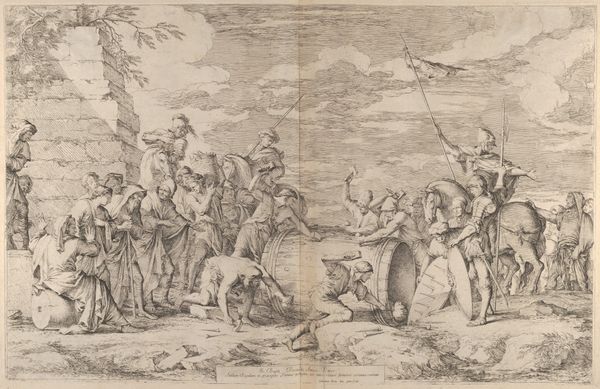
drawing, print, ink, engraving
#
drawing
#
baroque
#
pen drawing
# print
#
pen sketch
#
landscape
#
figuration
#
ink
#
genre-painting
#
engraving
Dimensions: height 243 mm, width 332 mm
Copyright: Rijks Museum: Open Domain
Editor: Here we have “Groep bedelaars in landschap,” or "Group of Beggars in a Landscape," an engraving from circa the 17th century by Monogrammist CLPAGI. The scene depicts a small group trudging along, and the landscape is quite bleak. What strikes me is the evident poverty, yet there's a sort of stoic perseverance in their posture. How do you interpret this work? Curator: Well, considering this through a historical lens, images like these became quite popular during the Baroque period, especially in regions affected by economic hardship or war. Such depictions of the lower classes often served varied purposes. On one hand, they might be straightforward observations of social conditions, humanising poverty for an aristocratic viewership. But then we must consider if this representation, potentially commissioned by the elite, subtly reinforced existing power dynamics or sparked reform. Do you see a sense of romanticism, or just documentary in the figures themselves? Editor: I see both, actually! There’s almost a beauty in the way they're rendered, which does hint at romanticism. But it also feels like a record of something real. Curator: Exactly. Engravings were a popular and easily disseminated medium, therefore affordable. This print’s intended audience would largely define its function. A middle-class owner may use this print for decor in his home; a richer patron may study it from afar, possibly funding social welfare programs based on his understanding. Therefore, how we consume it today versus how someone would centuries ago drastically impacts the "meaning". Editor: That’s fascinating. I hadn't considered how the change in the mode of distribution changes everything about the function of the artwork. Curator: Precisely. And by considering who the intended audience was, it might become easier to untangle why this image exists, and how it shaped and continues to shape perceptions of poverty. Editor: It gives me so much to think about, realizing how art and social context are entwined.
Comments
No comments
Be the first to comment and join the conversation on the ultimate creative platform.
